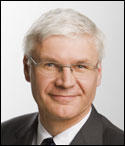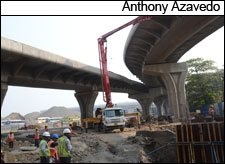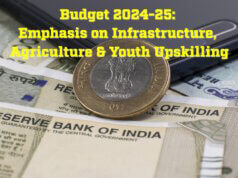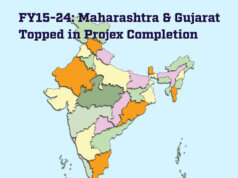 Dr. Wilfried Aulbur, Managing Director, Roland Berger Strategy Consultants, says that the reason for decline in the global construction equipment market is largely due to the growing uncertainties regarding the market and its regulations as well as rising capital costs leading to slowdown in key industries like construction, infrastructure and mining.
Dr. Wilfried Aulbur, Managing Director, Roland Berger Strategy Consultants, says that the reason for decline in the global construction equipment market is largely due to the growing uncertainties regarding the market and its regulations as well as rising capital costs leading to slowdown in key industries like construction, infrastructure and mining.
The demand for construction equipment industry is driven by growth in construction and infrastructure sector. Post-2009, the year in which the global CE market fell by 37 per cent, the Indian CE market has been able to report buoyant double-digit growth rates. However, since FY12 the industry has grown at a reduced rate of 5-6 per cent annually. The reason for this decline is largely the growing uncertainties regarding the market and its regulations as well as rising capital costs leading to slowdown in key industries like construction, infrastructure and mining.
In the medium-term, however, we need not be worried. With government projecting a spend of Rs.51 lakh crore in infrastructure sector under the 12th Plan (2012-17), almost double of what the investment was during the 11th Plan, and the huge demand for housing, power, road, ports, railways, civil aviation, telecommunication, urban development etc., the CE industry is poised to grow. The demand for low-budget housing will very likely not decline, especially if one takes into account the rapid growth of major Indian cities.
The Indian construction industry is highly fragmented. The sector is segmented between the organised and the unorganised players. The organised segment consists of companies that manage their business in a more professional manner and operate in medium-to-large scales. The unorganised segment primarily consists of standalone contractors that operate at a small scale.
 Increased usage
Increased usage
But, the circumstances are changing. The growing number of ‘larger projects’ and emphasis on ‘timely execution’ require participation of more organised players who can bring in global best practices. Going forward, the industry will observe increased usage of construction equipment defined to individual project needs, emphasis on fuel efficiency and a matured project management with focus on implementation. High-rise buildings, dedicated freight corridors, large open cast mines are some areas where the change is already happening. The government stimulus in promoting public-private partnership (PPP) models would further propel the growth of construction equipment market in the country.
As per Roland Berger estimates, India’s worldwide market share in the CE industry expected to be around 4 per cent by 2016 (up from 2 per cent in 2007). Companies, therefore, have to adapt and equip themselves on multiple fronts to be able to face the domestic demand as well as competition from foreign players. The Indian CE manufacturers need to improve competitiveness by: (a) creating products that meet the demand of Indian customers, (b) creating awareness about safety, efficiency and total cost of ownership, (c) collaborating with suppliers, and (d) upgrading skills of sales and service teams.
The CE industry, globally, is increasingly expanding business scope by tapping the entire value chain which include: (a) full range of products, (b) financial services (loans/lease, insurance), (c) after-sales (sales of replacement parts, maintenance contracts), (d) resale of used vehicles, and (e) rental services. Some of the Chinese OEMs such as Sany has actively invested in ‘6S’ stores as part of their sales channel strategy. The ‘6S’ stores stand for sales, service, spares, survey (market study), school (training) and secondhand equipment. Indian OEMs could look into such a model to enhance alternative revenue streams and allied businesses.
As the market grows and matures, leveraging the economies of scale that the domestic market offers, the Indian CE industry can become export hub. On the same lines, there exists immense potential for merger and acquisition for a win-win relationship between mature market players and domestic players. Through this way, while the mature market players get access to a growing domestic market and low cost manufacturing, the domestic players get access to advanced technology as well as overseas market. Advanced technology will drive the next generation CE industry that would demand premium products, stringent emission norms and improved product quality. With increasing competition from products imported from other low cost countries like China, it is an important factor that domestic players would need to address more proactively.
All in all construction equipment players will have a unique opportunity to exploit the huge business potentials of the sector. A concerted push by the industry as well as government is a prerequisite to exploiting this potential. The industry needs to get closer to customers, provide improved quality, service and delivery, and look for additional revenue streams by tapping the CE value chain. The government, on the other hand, needs to implement pro-development policies such as rapid execution of planned projects, access to credit, push for exports and streamlining policies related to environment and land acquisition.











